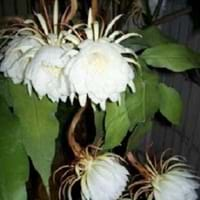Life Span
Perennial
Perennial
Type
Shrub
Cactus or Succulent, Flowering Plants
Origin
Eastern Asia, Japan
Mexico
Types
Not Available
Not Available
Number of Varieties
Not Available
Habitat
Old fields, stream banks
Tropical rainforest
USDA Hardiness Zone
4-8
9-11
Sunset Zone
A3, 2b, 3a, 3b, 4, 5, 6, 7, 8, 9, 10, 11, 12, 13, 14, 15, 16, 17, 18, 19, 20, 21, 22, 23, 24
H1, 21, 22, 23, 24
Habit
Oval or Rounded
Weeping
Minimum Width
Not Available
Flower Color
Yellow, Yellow green
Red, Orange, Magenta, Orange Red
Flower Color Modifier
Not Available
Not Available
Fruit Color
Red orange
Purple, Red
Leaf Color in Spring
Light Green
Not Available
Leaf Color in Summer
Green
Not Available
Leaf Color in Fall
Purple, Orange, Burgundy, Crimson
Not Available
Leaf Color in Winter
Not Available
Not Available
Leaf Shape
Obovate
Long linear and narrow
Plant Season
Spring, Summer, Fall, Winter
Spring, Summer, Fall, Winter
Sunlight
Full Sun, Partial Sun
Partial Sun, Partial shade
Growth Rate
Medium
Medium
Type of Soil
Clay, Loam, Sand
Loam, Sand
The pH of Soil
Acidic, Neutral, Alkaline
Neutral
Soil Drainage
Average
Well drained
Bloom Time
Spring, Late Spring
Spring, Late Spring, Early Summer, Summer
Tolerances
Pollution, Drought, Salt, Soil Compaction
Not Available
Where to Plant?
Ground, Pot
Ground, Pot
How to Plant?
Seedlings
From Rhizomes, Leaf Cutting, Stem Planting
Plant Maintenance
Medium
Medium
Watering Requirements
Requires regular watering during dry weather
Keep the ground moist but not water-logged, Water occasionally
In Summer
Lots of watering
Lots of watering
In Spring
Moderate
Moderate
In Winter
Average Water
Average Water
Soil pH
Acidic, Neutral, Alkaline
Neutral
Soil Type
Clay, Loam, Sand
Loam, Sand
Soil Drainage Capacity
Average
Well drained
Sun Exposure
Full Sun, Partial Sun
Partial Sun, Partial shade
Pruning
Remove damaged leaves, Remove dead branches, Remove dead leaves
Remove damaged leaves, Remove dead branches, Remove dead leaves
Fertilizers
All-Purpose Liquid Fertilizer
All-Purpose Liquid Fertilizer
Pests and Diseases
Red blotch, Sunken patches
Red blotch
Plant Tolerance
Drought
Drought
Flowers
Insignificant
Showy
Flower Petal Number
Single
Single
Foliage Texture
Medium
Bold
Foliage Sheen
Matte
Not Available
Attracts
Birds
Hummingbirds
Allergy
Not Available
no allergic reactions
Aesthetic Uses
Borders
Beautification, Showy Purposes
Beauty Benefits
Not Available
Not Available
Environmental Uses
Air purification
Air purification
Medicinal Uses
Anthelmintic, Antibacterial, Antiseptic, Cancer
Not Available
Part of Plant Used
Fruits, Leaves
Whole plant
Other Uses
Used to make yellow dye
Showy Purposes, Used as Ornamental plant
Used As Indoor Plant
No
Yes
Used As Outdoor Plant
Yes
Yes
Garden Design
Edging, Foundation, Hedges, Mixed Border, Rock Garden, Wall
Container, Hanging Basket, Houseplant, Rock Garden, Wall, Tropical
Botanical Name
BERBERIS thunbergii
DISOCACTUS ackermannii
Common Name
Japanese Barberry
Orchid Cactus
In Hindi
Japanese Barberry
आर्किड कैक्टस
In German
Thunberg-Berberitze
Orchid cactus
In French
Berberis thunbergii
Cactus Orchid
In Spanish
Berberis thunbergii
cactus orquídea
In Greek
Japanese Barberry
ορχιδέα κάκτος
In Portuguese
Japanese Barberry
Orchid cactus
In Polish
Berberys Thunberga
Orchid kaktus
In Latin
Japanese Barberry
Orchid cactus
Phylum
Magnoliophyta
Embryophyta
Class
Magnoliopsida
Magnoliopsida
Order
Ranunculales
Caryophyllales
Family
Berberidaceae
Cactaceae
Genus
Berberis
Disocactus
Clade
Angiosperms, Eudicots
Angiosperms, Core eudicots, Eudicots
Tribe
Not Available
Hylocereeae
Subfamily
Not Available
Cactoideae
Number of Species
Not Available
Not Available
Season and Care of Japanese Barberry and Orchid Cactus
Season and care of Japanese Barberry and Orchid Cactus is important to know. While considering everything about Japanese Barberry and Orchid Cactus Care, growing season is an essential factor. Japanese Barberry season is Spring, Summer, Fall and Winter and Orchid Cactus season is Spring, Summer, Fall and Winter. The type of soil for Japanese Barberry is Clay, Loam, Sand and for Orchid Cactus is Loam, Sand while the PH of soil for Japanese Barberry is Acidic, Neutral, Alkaline and for Orchid Cactus is Neutral.
Japanese Barberry and Orchid Cactus Physical Information
Japanese Barberry and Orchid Cactus physical information is very important for comparison. Japanese Barberry height is 90.00 cm and width 120.00 cm whereas Orchid Cactus height is 15.20 cm and width Not Available. The color specification of Japanese Barberry and Orchid Cactus are as follows:
Japanese Barberry flower color: Yellow and Yellow green
Japanese Barberry leaf color: Light Green
Orchid Cactus flower color: Red, Orange, Magenta and Orange Red
- Orchid Cactus leaf color: Not Available
Care of Japanese Barberry and Orchid Cactus
Care of Japanese Barberry and Orchid Cactus include pruning, fertilizers, watering etc. Japanese Barberry pruning is done Remove damaged leaves, Remove dead branches and Remove dead leaves and Orchid Cactus pruning is done Remove damaged leaves, Remove dead branches and Remove dead leaves. In summer Japanese Barberry needs Lots of watering and in winter, it needs Average Water. Whereas, in summer Orchid Cactus needs Lots of watering and in winter, it needs Average Water.





